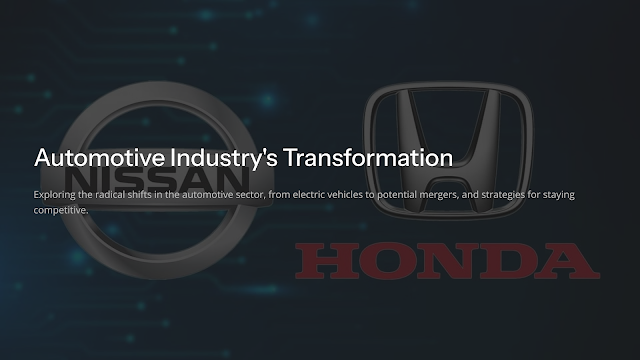Understanding the Automotive Industry’s Transformation
1. The Accelerating Shift to Electric Vehicles
Governments and consumers worldwide are moving away from internal combustion engine (ICE) vehicles toward EVs at an unprecedented pace. This shift is no longer optional but essential for survival in the market.
- Industry Data: By 2030, EVs are expected to account for over 50% of global new vehicle sales, up from just 22% in 2024.
- Key Challenge: Transitioning to EVs requires automakers to overhaul manufacturing systems, secure raw materials like lithium for batteries, and develop efficient charging networks.
2. Supply Chain Disruptions
Global supply chains are under pressure due to geopolitical tensions, semiconductor shortages, and rising raw material costs.
- Impact on Production: The semiconductor shortage alone has reduced global car production by an estimated 4 million units in 2024.
- Strategic Response: Automakers are increasingly diversifying supply chains and exploring vertical integration to reduce reliance on single suppliers.
3. Cost-Cutting and Workforce Restructuring
To fund the transition to EVs and emerging technologies, companies are cutting costs aggressively.
- Honda's Case: Honda has reduced its workforce in ICE-related departments by over 30% while redirecting investments toward EVs and software-based solutions.
- Nissan's Strategy: Nissan has downsized its lineup of non-core products and is reallocating resources to focus on battery technology and sustainable mobility.
Nissan and Honda’s Potential Merger: A Survival Strategy
The news of Nissan and Honda exploring a possible merger underscores the immense financial and operational pressures faced by traditional automakers.
1. Expected Benefits of the Merger
A merger could create a powerhouse capable of addressing the industry’s critical challenges.
- Economies of Scale: Combined annual sales of nearly 6 million units could lower production costs and improve procurement efficiency.
- Tech Synergy: Nissan's expertise in EVs and Honda’s leadership in hybrid technologies and fuel cells could drive innovation.
- Market Diversification: Together, they could expand their global footprint and better compete in key markets like North America, Europe, and China.
2. Challenges in the Merger
While the merger offers potential, significant hurdles remain.
- Cultural Differences: Nissan and Honda have distinct corporate cultures and management styles that could complicate integration.
- Regulatory Approvals: The merger would require approval from Japanese and global regulatory authorities, a process that could face scrutiny over competition concerns.
Strategies for Staying Competitive in the Automotive Industry
Automakers must adopt a forward-looking approach to thrive in this disruptive era. Here are actionable strategies:
1. Invest in Research and Development (R&D)
Innovation is no longer a luxury—it is a necessity. Companies must prioritize investments in EVs, autonomous technology, and AI-driven solutions.
- Case Study: Toyota’s joint venture with Panasonic for solid-state battery technology demonstrates how collaboration can accelerate breakthroughs.
- Actionable Insight: Develop strategic alliances with tech startups and universities to foster innovation while reducing R&D costs.
Pro Tip: Track consumer EV preferences using Google Trends to align product launches with market demand.
2. Supply Chain Resilience
A diversified and localized supply chain can mitigate risks from geopolitical tensions and resource shortages.
- Case Study: Tesla’s investments in lithium mining partnerships and localized battery factories exemplify this strategy.
- Actionable Insight: Establish multi-supplier agreements for critical components like semiconductors and batteries to enhance flexibility.
Pro Tip: Use predictive analytics tools to identify potential supply chain bottlenecks before they impact production.
3. Sustainability as a Core Strategy
Sustainability is becoming a key purchasing criterion for consumers and a compliance requirement from governments.
- Examples:
- Ford is committing to a carbon-neutral manufacturing process by 2035.
- Volvo’s vehicles are now made from up to 25% recycled materials.
- Actionable Insight: Collaborate with suppliers to reduce carbon emissions across the supply chain and embrace circular economy principles.
Pro Tip: Highlight sustainability milestones in marketing campaigns to enhance brand perception and attract eco-conscious buyers.
What Can Procurement and Supply Chain Professionals Learn?
Procurement and supply chain professionals play a pivotal role in this transformation. Here’s how they can align their strategies with industry changes:
- Monitor Regulatory Changes: Stay updated on EV mandates and tax incentives in key markets to adjust procurement strategies accordingly.
- Focus on Supplier Innovation: Partner with suppliers that invest in new technologies like lightweight materials or advanced battery components.
- Adopt Agile Processes: Use digital tools to enhance visibility across the supply chain and respond to disruptions in real-time.
Conclusion: Navigating the Future of Mobility
The potential merger between Nissan and Honda serves as a clear reminder of the high stakes in today’s automotive industry. Success will depend on automakers' ability to innovate, collaborate, and adapt to rapid changes. For procurement professionals, this is an opportunity to lead transformative strategies that align with sustainability goals and technological advancements.
Final Thought: In this era of disruption, survival favors the bold. Automakers and supply chain professionals must embrace change, foster innovation, and remain agile to stay ahead in the race for the future of mobility.



